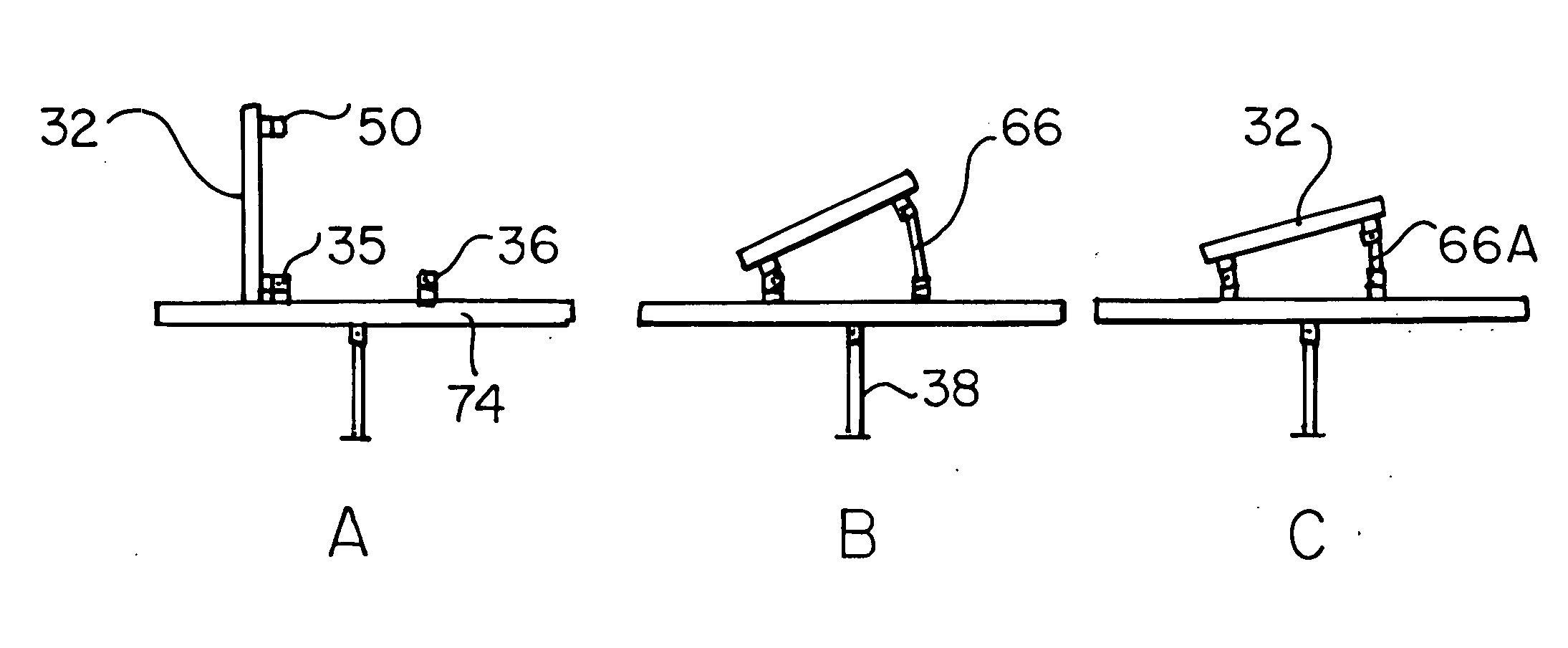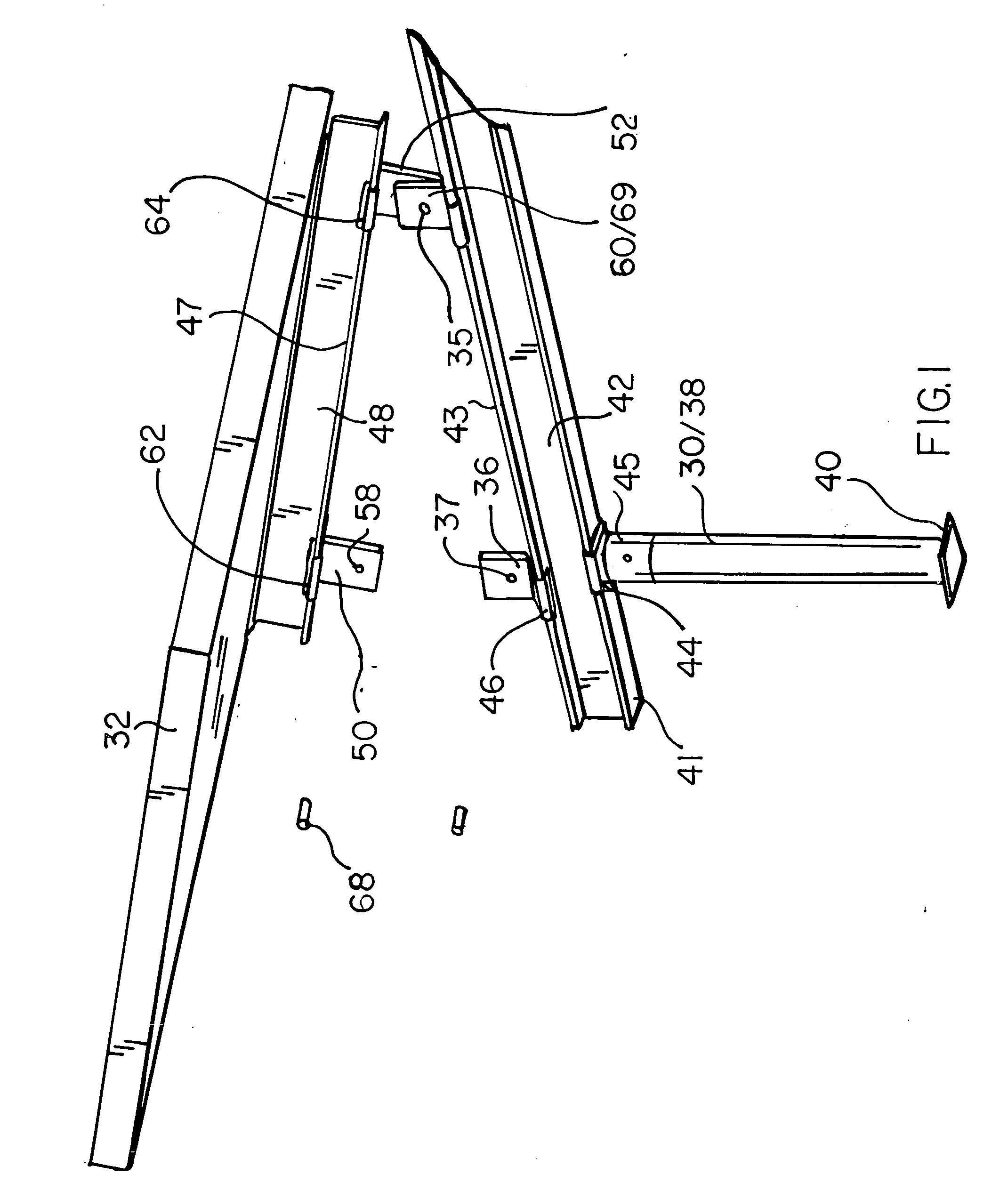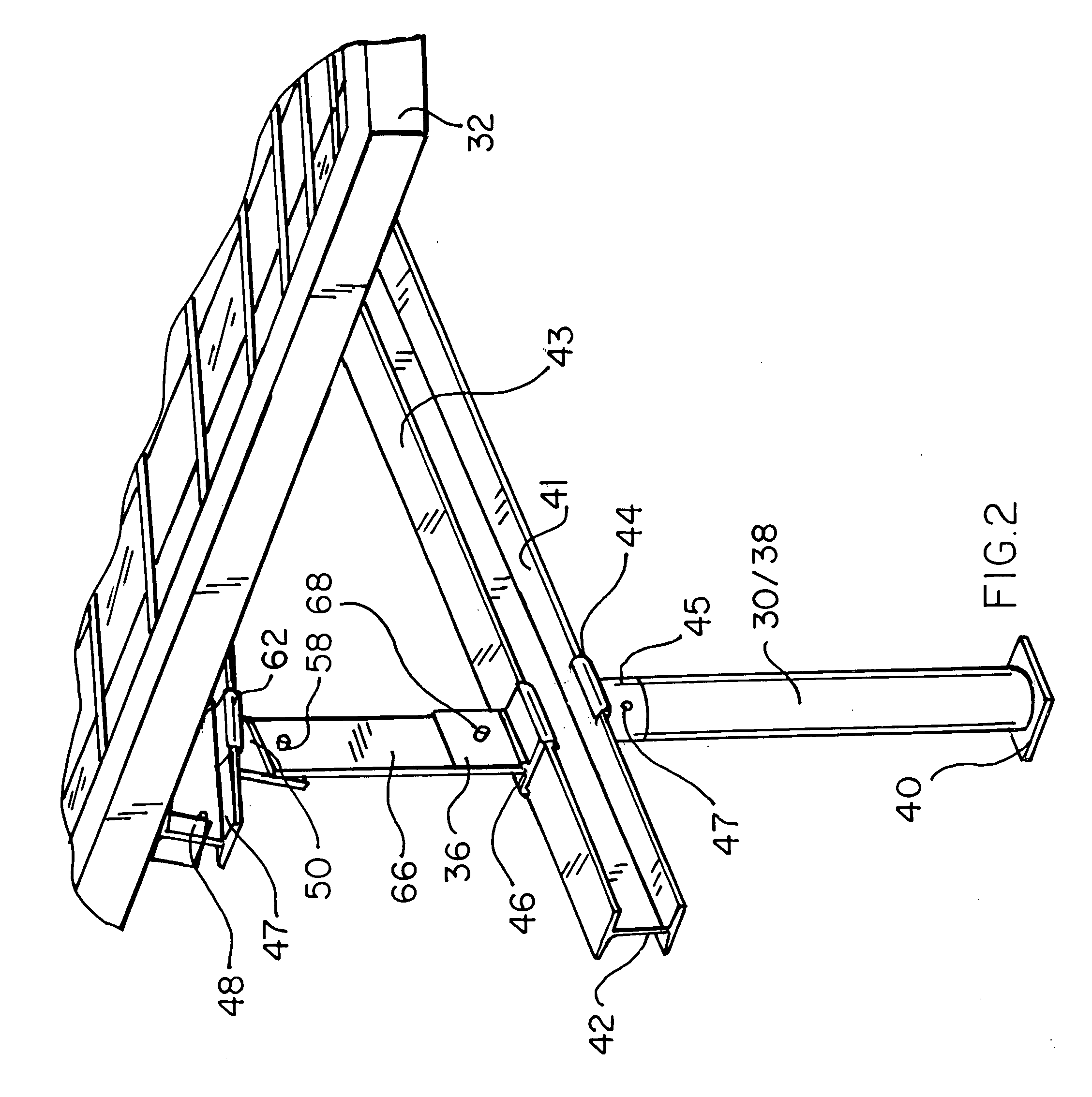System for mounting and selectable adjustment of angle of elevation of groups of PV panels
- Summary
- Abstract
- Description
- Claims
- Application Information
AI Technical Summary
Benefits of technology
Problems solved by technology
Method used
Image
Examples
Embodiment Construction
[0046]With reference to the perspective view of FIG. 1, the inventive system for the selective adjustment of the angle of elevation of groups of photo voltaic (PV) panels relative to a roof to which such panels are to be attached may be seen to include a platform 30, upon or through said roof (see FIGS. 12 and 16), of sufficient strength and stability to support one or more PV panels 32, inclusive of arrays and groups thereof. Further shown in FIG. 1 are lower couplings 46, provided upon said platform. Each of said couplings are provided with an aperture 37 within extension tabs 35 and 36 of the couplings. See also FIG. 13. As may be further noted in FIGS. 1-3, platform 30, in a preferred embodiment, includes a vertical member 38, a sleeve 45, a base 40 and an I-beam or rail 42 which is preferably secured to sleeve 45 by an integral coupling 44 which is proportioned for slidable engagement with a lower edge 41 of I-beam 42. Similarly, lower portions of said couplings 46 are proporti...
PUM
 Login to View More
Login to View More Abstract
Description
Claims
Application Information
 Login to View More
Login to View More - R&D
- Intellectual Property
- Life Sciences
- Materials
- Tech Scout
- Unparalleled Data Quality
- Higher Quality Content
- 60% Fewer Hallucinations
Browse by: Latest US Patents, China's latest patents, Technical Efficacy Thesaurus, Application Domain, Technology Topic, Popular Technical Reports.
© 2025 PatSnap. All rights reserved.Legal|Privacy policy|Modern Slavery Act Transparency Statement|Sitemap|About US| Contact US: help@patsnap.com



